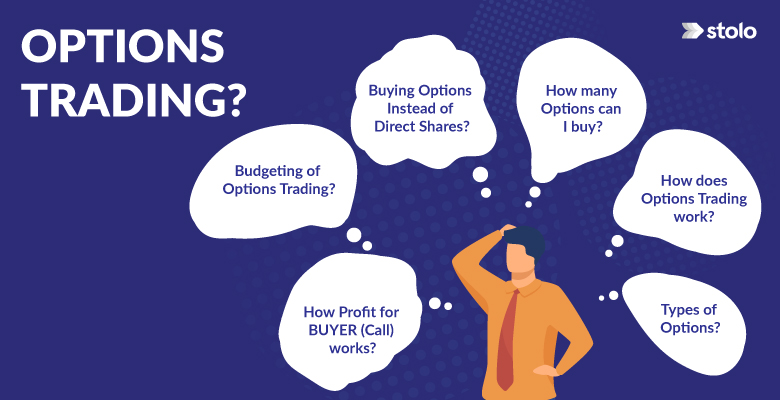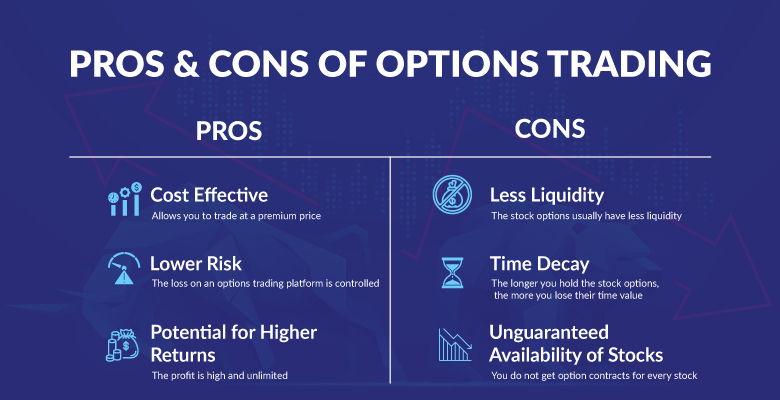What is Options Trading?
Options Trading allows a trader to either buy or sell a derivative product (Eg, Stocks) within a predetermined date and predetermined price, with no obligation to exercise the options one holds.
If this above definition confused you and made you wonder, “What is Options Trading?” DO NOT WORRY. The example below will clear all your doubts and give you a foundational understanding of what Options Trading is.
Example:
Assume TATAPOWER is currently trading at INR 200 per share. According to your analysis (Fundamental or technical), you predict that TATAPOWER will rise to INR 250 per share in the next 2 months. This is referred to as the Strike Price (The target price).
Given the scope for this rise, you choose to buy TATAPOWER.
Budgeting of Options Trading
One can use their budget more efficiently in options trading; this is how:
- Options increase the number of shares one can purchase.
- You may purchase options at a premium price at the Options Trading Platform.
Example:
Assume your budget is = INR 15000
If you buy the stock, according to your budget, you are capable of purchasing 75 stocks (200 * 75=15,000)
However, if you choose to buy Options of TATAPOWER instead of direct shares, you only have to pay a token price, which is referred to as the Premium Price. The premium price is usually 2% of the stock price, and in options trading, one can buy each stock at the premium price instead of its actual price.
So in our example, the per-option price of TATAPOWER is 2% of 200 = INR 4.
This means that with the given budget and the option of buying them at a token price, we can buy more than 75 stocks, which creates enormous potential for massive profits.

Pros of Buying Options Instead of Direct Shares
As observed above, you may buy TATAPOWER for a premium price, which is lower than the direct price of the share.
In the example, your previous purchase capability was 75 stocks only, but with options, you can buy 3,750 stocks.
How many Options can one buy?
There is a system for the number of options one can buy. Options must always be bought in certain numbers only. We refer to this specific number as Lot Size. Each Stock has its own Lot Size, which is determined by SEBI and these lot sizes change from time to time.
As a trader, you may buy options in either the Lot Size or in the multiples of the given Lot size.
Inferring the above into our example, the Lot size for TATAPOWER is 3375. So you must buy a minimum of 3375 options of TATAPOWER in order to purchase your options trading platform.
In that case, INR 4 * 3375 = INR 13,500. Given our budget, we can buy 3375 options of TATAPOWER.
Types of Options and How does Option Trading Work?
Now that we have understood the basics of Options and their pricing let us understand how options trading works and look at the types of options and profits.
Types of Options
There are, in general, two types of options: Call Option and Put Option. On your options trading platform, you will be one of the following:
Call Option:
The right to buy an option is called a Call Option. The call option is divided into Call Buyer and Call Seller.
Put Option:
The right to sell an option is called a Put Option. The put option is further divided into two, Put Buyer and Put Seller.
In our example, we wanted to buy TATAPOWER, making us a BUYER(call).
How does Profit for BUYER (call) work?
The concept of making a profit is relatively easy to understand. If, within the predetermined time, the stock reaches the strike price (target price), then you receive your profit share. If the stock doesn’t hit the strike price but goes way lower, against the direction you predicted it would, then you are at a loss, but a limited loss. This means you will only lose the premium you paid and nothing more.
In our example, we predicted that TATAPOWER would go up to INR 250 in the next two months.
Profit:
If TATAPOWER hits 250, we get a profit of INR 50 per share. Remember, the profit can be more too. If, within 2 months, TATAPOWER hits 300, we will then have a profit of INR 100. So the profit here is unlimited. The more the price rises, the more your profit shall be.
So here, we will exercise the option.
Loss:
If TATAPOWER hits INR 150 within 2 months, then we are at a loss for the premium price we paid. Limited loss only. You will choose not to exercise your option and back off, losing only the premium price you paid.
This advantage of exercising your options at the given timeline is what we refer to as the right to buy/sell but no obligation to do so.
For Seller (call), the profit-loss concept goes vice-versa. There would be unlimited loss and limited profit (Profit will be limited to the premium received).
All these take place at the options trading platform.
Pros and Cons of Options Trading
Pros of Options Trading
- Cost Effective – Allows you to trade at a premium price. One can create massive profits through Options Trading through small capital or funds. You do not have to buy an entire stock but only pay a token price to make a profit.
- Lower Risk- The loss on an options trading platform is controlled. The maximum loss one would face is the premium paid to buy an option. This limits the risk, making it comparatively safer.
- Potential for Higher returns- The profit is high and unlimited, as mentioned above. No specific target needs to be maintained; if the stock performs in your direction, the profit only keeps increasing.
Cons of Options Trading
- Less Liquidity– The stock options usually have less liquidity. Marking an entry or exit into the trade becomes confusing or complicated as each stock options trade at varied prices.
- Time Decay- The longer you hold the stock options, the more you lose their time value. In simple terms, the rate of decline in the value of the stocks with time is referred to as time decay.
- Unguaranteed availability of stocks– You do not get option contracts for every stock. Hence this can make it challenging to further one’s strategies.
Difference between Stock Trading and Options Trading
- Options have a fixed timeline, but stocks do not.
- You must buy options in fixed numbers only (Lot size & its multiples), but it is not so for stocks.
- With stocks, you may hold the voting right as you receive partial ownership of the company, but in options, you do not.
You can explore more about Options Trading and how Option trading platform works through this article on How to Trade Options: A Step-by-Step Guide for Beginners



